Learning to Do Historical Research: A Primer
Positioning Your Argument in a Wider Literature
Offer the World a New Perspective
Liese Dart
Brian Hamilton
Introduction
Academic scholarship is a world of conversations. Ideas are exchanged not only around the tables in seminar rooms, but also in lecture halls and on the pages of books and journals. Most of these discussions began long before we were born, and all will likely outlast us. Your work is more than just a few pieces of paper proving your competence to a professor; it is one of many voices in the ongoing conversations about your topic. We’ll help you learn how to say something nobody’s said before, adding to our collective understanding of the past.
Table of Contents
Why do we keep writing history? If we have one book on the building of the Grand Coulee Dam, why do we need another? The past doesn’t change, right?
Even though the past itself never changes, our ideas about it do. We think of new questions and we uncover new documents. We discover unexplained phenomena and we grow dissatisfied with the explanations we have. Shedding light on the past is a collective effort, and you can help. To help advance our knowledge about history, look around to learn what we think we know and what we hope to find out.
You can write a research paper that opens a brand new window on the past. The best historians are not those who know the most facts, but those who think about the past in new ways. Any old topic can be made fascinating when the writer says something original about it. You’ll never know the value of your own work unless you know the work that has come before it.
Imagine for a moment that you are writing a paper on a woman's candle-making business in colonial New Hampshire. At first, this may sound like a mundane topic. But if everything that's been written on the colonial economy focuses on what men are doing, if scholars had assumed that candles were always made at home and not sold at market until decades later, if this woman kept the profits of her sales at a time when a wife's property belonged to her husband, then your paper has called into question much that has long been considered fact.
To make a new claim about the past, you’ll have to know some of the claims others have made. Once you are aware of the variety of ways that writers have handled the topic, you will be able to make a more informed decision about your approach. Seeing the arguments that exist in the current debate will challenge you to rethink your analysis and produce something new and dynamic.
Prove You Know Your Stuff
There are always basic things you have to know before you can try to say something new about any subject. This is as true for environmental historians as it is for auto mechanics, nuclear physicists, and baseball fans. You want your work to convince those who know about your topic that you’ve done your homework and are one of them.
Think of your paper as just the tip of an iceberg. What’s visible to the eye above the ocean is only a small percentage of the total ice. The rest of the structure keeps the iceberg afloat, just as the vast knowledge you’ve gained in your research supports your paper’s argument. You will learn a lot about your topic that may not end up in your final draft. Familiarizing yourself with what others have written will help you decide what to emphasize and what to leave out. The well-informed reader can look at what you include and tell from it how much more you know.
Make Exciting New Connections
By exploring other scholars’ work, you open up the possibility of discovering exciting, imaginative connections. Chances are good that a story you want to tell has corollaries in other periods of history and relates to other schools of thought, literary genres, scientific studies, or political fields. Consider how two different scholars might talk about the same phenomenon. Is there a thread that weaves them together?
For example, in chapter six of Sick Building Syndrome and the Problem of Uncertainty (2006), author Michelle Murphy uses the metaphor of ecology to relate the science of an interior office space to her reader:
Crack open an office building at the turn of the millennium and find a teeming ecology. Dust mites flourish in the carpet jungle, feeding on the skin flecks sloughed off by human workers. Nematodes and cockroaches inhabit its bowels. Buried in the walls, a cool spot condenses air moisture, forming first a drip, then a stagnant puddle populated by microbes and molds. Every morning a swarm of humans invades, introducing fresh batches of organisms and chemicals suspended in the “personal clouds” which surround their bodies.
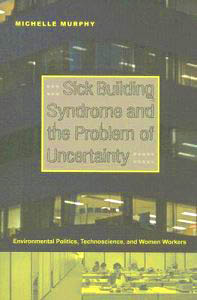
Michelle Murphy, Sick Building Syndrome and the Problem of Uncertainty (2006)
Although the primary concern of Murphy’s book is to describe the connections made by office workers in the 1970’s and 80’s between their health and their work environments, her vivid descriptions of the natural ecology of an office help the reader understand the way in which systems engineers could tackle the hidden problems of “sick building syndrome.” Similar to an ecologist viewing a landscape, Murphy sees the office as a living environment, full of living organisms that feed and react in relation to one another. Thinking like an ecologist helped her offer a new perspective on the experiences reported by office workers and the challenges facing engineers.
What could you learn from another set of scholars about your topic? Unexpected connections not only help you compare and contrast ideas; they also make your work more exciting and engaging to read.
Return to Top of Page
As you become familiar with the conversation that surrounds a topic, your research may emerge from the gaps or faulty logic you see in others’ work. However, if you already have a research topic, learning what others have already said about it can help you come up with the right research question and an exciting, original thesis.
Let's say you’re in an environmental history course and have to write a term paper. Outbreaks of disease are something you’ve always been interested in, so you’ve looked at documents from the Influenza Epidemic of 1918. You find some intriguing newspaper articles from that period claiming African Americans were less susceptible to the disease than others.
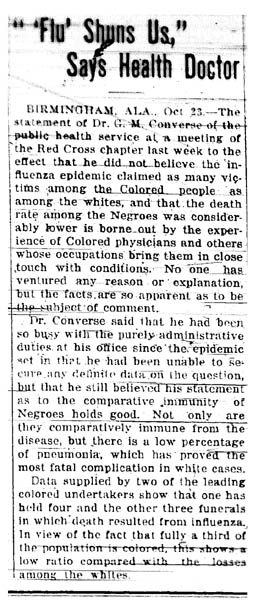
Cleveland Advocate, November 2, 1918; February 14, 1920.
http://dbs.ohiohistory.org
Now you need a research question to guide your analysis of those documents. Where can you turn for help to figure out what sorts of new claims about these documents will add something to an ongoing conversation?
Professors are experts not only on a particular subject; they are equally knowledgeable about the conversations on that subject. They can be an invaluable resource when you're trying to put your work in context. Most professors will immediately rattle off the names of scholars whose work resembles your own and can give you a brief synopsis of major trends in the research on your topic. Teaching assistants and graduate students can be helpful in much the same way. Email is usually the best way to reach out to these folks, though you always should offer to stop by office hours should they prefer to talk face to face.
Keep in mind that professors and students are situated in disciplines and study a finite number of fields. Think of disciplines as the academic departments of a college or university, such as history, English, or economics. A field is a topic of study within a discipline, and scholars usually count two or three fields as their areas of expertise. This is important to remember because you can profit from talking to scholars of several fields and in different disciplines as you pursue your research.
Fields
While it’s always a good idea to start with your own professor, if you do some poking around the website of your history department (that is, within the discipline of history), you’ll find people who study different fields. They may approach your project from different angles. For instance, a scholar of African American history might ask about the significance of the articles’ headlines during the time of social Darwinist ideas about the genetic inferiority of African Americans. Someone in the field of urban history might connect your story to the Great Migration, when thousands of southern African Americans moved to northern cities. You might even discover an historian who is interested in the emerging field of “the history of the body,” who would encourage you look into how the people in your story understood the world through their physiological experience of it and were affected by society’s definition of a “normal” body.
Disciplines
If you have the time, there’s no reason to limit yourself to advice only from people in one discipline. Some of the most exciting projects are those that are interdisciplinary. Scholars can be insular. For instance, historians tend to talk mostly to other historians and read mostly history journals. They can be unaware of some of the really exciting questions that other disciplines are asking. Browse around your college’s or university’s website and think about which other departments might connect to your research project. When it comes to African Americans and the flu, there are tons of possibilities:
- Epidemiology
- Genetics
- Population Health
- History of Science
- Biology
- Medical History
- Public Health
- Ecology
These different disciplines all can contribute to a more holistic understanding of the biological, economic, and cultural impacts of disease. While a geneticist may conduct research to determine the type of DNA that is most susceptible to the flu, someone studying population health may pay attention instead to the living conditions and access to healthcare of those communities most affected by this epidemic. Both types of scholarship can shed light on society’s understanding of influenza in 1918.
While talking to an expert is the best way to gather useful advice, there are print sources that can offer you similar insights.
Historiographic Essays
Historiography is the history of history. That is, the historiography of the Civil War refers not to what happened in between 1861 and 1865, but what has been said and written about the Civil War since it ended. In part, your efforts to position your argument are designed to help figure out where you fit into the historiography of your topic.
Occasionally, scholars will write an essay (sometimes even a book) on the historiography of a subject. This serves two purposes: to summarize and synthesize existing scholarship, and to identity places where more research is needed.
While they can be tricky to find, these essays usually include the word historiography in their abstract, if not in their title. So it’s a good word to remember for a keyword search in an article database.
Example: For instance, if you want to find out the ways diseases have been studied by environmental historians, type “historiography,” “disease,” and “environmental history” into your library’s journal article database (such as JSTOR or ProjectMuse). In our example, the first article to appear is Gregg Mitman's “In Search of Health: Landscape and Disease in American Environmental History” (2005), which tells you in its abstract that it will “offer a preliminary historiographic survey” of scholarship on disease.
Now read the article looking for its potential relevance to your research.
Example: Mitman writes that the theory that germs spread disease led public health officials to look for the causes of disease in “the customs and habits of particular ethnic groups.” How might the two news articles you found complicate this story? If bureaucrats were used to seeing disease among urban minority populations, how might they have reacted to these claims that African Americans were immune to the flu?
Example: According to Mitman, “environmental historians fail to consider scientific knowledge as a historic product of time and place.” Couldn't you argue that the African American doctors in your articles are creating new knowledge about human health? How might their efforts be influenced by the politics of the era of racial segregation or the northern cities to which southern African Americans are migrating?
Edited Anthologies
In your research, you may already have come across several books that compile articles by a number of historians on the same topic. These compilations are called anthologies. Anthologies are good places to look for common and conflicting approaches and interpretations on a topic. Often an introductory essay will outline the contours of the essays, highlighting the trends that you're hunting for in your research.
A keyword search at your library can help you find anthologies.
Example: If you try “urban environmental history,” you'll see a number of books. To find an anthology, look for titles that list an editor rather than an author. Browsing through these titles, you'll find The Nature of Cities, edited by Andrew Isenberg. If you click on it, you'll see a promising section heading called “Urban Spaces, Death, and the Body” as well as an introduction with the title “New Directions in Urban Environmental History.” You assume that the introduction will be helpful since you want your argument to take your topic in new directions.
Anthologies can help you see whether your work is relevant to the conversations scholars have had on your topic and if your research can help move the conversation forward.
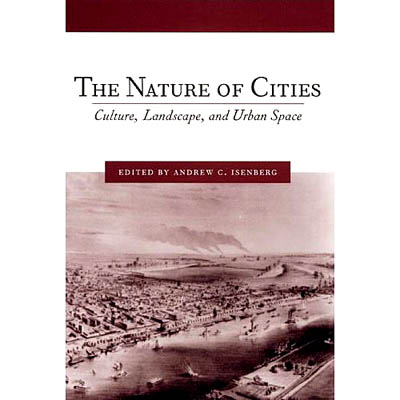
Andrew Isenberg, ed., The Nature of Cities (2006)
Read the introduction of the Isenberg anthology first. In this volume you'll see that the editor sketches the historiography of urban environmental history, and he also describes the contents of each article.
Example: Isenberg claims that the first four articles in this collection show “how death and dying inverted racial and class hierarchies and upset notions of what was considered natural.” Might that be what you're finding in your research? If public health officials expected African Americans to get more diseases, in what ways did these articles challenge that assumption?
Example: He describes an essay in the book on yellow fever in New Orleans. The 1853 “epidemic claimed ten thousand lives; 90 percent of the victims were white.” Here you've discovered a direct comparison to your study. You might never have intended to look this far back in time, but now you can describe how what you're seeing in your research on the Flu Epidemic of 1918 differs from what this article describes going on with yellow fever in 1853.
Clues under Your Nose
Even the history books and articles you’ve already gathered in your research include hints about historiography. Take a fresh look at these sources to see what they can teach you about the variety of scholarship on your topic. Historians usually remark on other historians’ work in the introductions of their books and articles. They describe the work that has influenced their own and what’s new about what they’re going to say.
Example: In Christopher Sellers's “Nature and Blackness in Suburban Passage,” the second paragraph has two sentences that do just this. First he identifies the conversation he’s joining, listing four other historians who have helped us learn “much more about the historical shaping of black environments.” Then he tells us what he's going to add: “The oral histories...I culled...help to extend this diversifying of environmental history to a less studied group.”
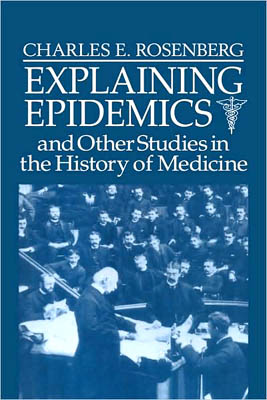
Charles Rosenberg, Explaining Epidemics (1992)
Even without these explicit comments, bibliographies can help you get a sense of the ongoing conversations. Skim the other histories listed.
Example: If you look back through the bibliographies of the books you've gathered, you'll see Charles Rosenberg's Explaining Epidemics pop up again and again. While that book might not have much on the 1918 influenza or anything at all on African Americans, it would be worth looking at because it's clearly central to the way historians have thought about disease. Whether you agree with Rosenberg's arguments or not, by having grappled with them you join the ongoing conversation about the history of disease.
Keeping Current
New work is always being done. Two good places to look for the latest scholarship are book reviews and dissertations.
Book reviews are useful because they quickly lay out the historian's argument and often situate that argument in the subject's historiography. Focus your reading on journals within a specific scope relevant to your research. Review articles stick out in database searches because they are almost always between one and three pages. Some article databases let you limit your search to just reviews.
Dissertations are useful in finding the latest work (and, sometimes, the only work) on your subject. Sometimes libraries will offer services for searching dissertation abstracts. When working on a big project, you might even profit from starting an email correspondence with the author of a particularly relevant dissertation, as that person has put lots of effort into trying to add something to the existing conversation.
In addition to thinking about the conversations among historians, consider the connection between your work and contemporary news sources outside of the academy. Once you are immersed in a topic, stories in the news will jump out at you. Periodical searches can help you find these connections.
Example: Using “ethnicity” and “disease” as keywords in a simple search on the New York Times website garners almost 3,000 articles. The first page of results is full of contemporary discussions of the relative susceptibility of different ethnic groups to various diseases. How might your work speak to discussions shown in the news such as an article stating that African Americans are getting Parkinson's at lower rates than white Americans or an article citing geneticists’ latest declaration that race cannot be detected in DNA?

Google Alerts
You can even receive regular updates from Google News Service on journalism relevant to your topic. Sign up for “Google Alerts” at http://www.google.com/alerts. This service monitors a broad spectrum of news services, websites, and blogs for mention of your keywords and notifies you when a new article appears.
Example: Suppose you had requested articles containing the words “African Americans” and “flu.” On November 18, 2008, an email would have alerted you to the appearance of a story on MarketWatch describing the rise in fatal flu cases among African Americans due to a lag in immunization rates. Could you use this article in your introduction to capture your reader's attention and suggest the contemporary relevance of your paper?
Return to Top of Page
Positioning Your Secondary Sources
As you’re researching a topic, you collect primary and secondary sources. Primary sources come from the period about which you are writing. They represent the past and allow you speak with authority about what happened. Secondary sources are the work of others, like you, who are making claims about what happened in the past. We often look to these documents to tell a cohesive story that we see only fragments of in the primary documents.
However, the authors of your secondary sources are just like you. They are trying to make sense of history and are influenced by the world around them. At the same time that you are figuring out where you fit in the ongoing conversation, try to figure out where they might have fit into the conversation of their day.
Who’s the Historian Talking To?
Critical reading is an important skill for any successful historian. Well-written history presents all sides of an argument, offering unbiased facts on what happened in the past. There are two ways to read a book. First, you can read for content and fact—to learn about a subject. Second, you can read to analyze the voice and opinion of the author—what is his or her primary motive? These are two components of critical reading.
As you read for facts, make sure to scan the document for clues about the historian’s agenda. Having a strong agenda can make a narrative less historical and more political. However, you should also take into consideration that the author’s position may be a reaction to the previous scholarship on a subject and therefore an attempt to shed new light on a topic.
Example: In The Ecological Indian (2000), Shepard Krech III argues that Native Americans were not the benign and harmonious guardians of nature that popular history has portrayed them to be. He writes, “In Oregon’s Willamette Valley, as on the Great Plains, Indian fires shocked many white men. Settlers were horrified by the 'long lines of fire and smoke,' and by 'ravages' of fire, 'dense volumes' of smoke, and 'sheets of flame.'” Krech’s insight adds to the scholarly debate on historical Native American land use by challenging previous scholarship on the subject.
Inevitably some historians slip into activism, pushing their political beliefs into the argument. This practice can make readers feel like they are not getting the whole truth and significantly weaken an otherwise good argument. Be aware of this by (at the same time you’re reading for content) keeping track of fuzzy logic and obvious holes in the arguments you encounter.
Every piece of history has as much to reveal about when it was written as it does about the age it describes. Many of the first histories of the Civil War were written by Union army veterans who stressed the heroism of the battle and the noble cause of saving the Union. At the turn of the century, as the United States became the world’s leading economic power, historians described the Civil War as a clash of economic systems, the backward-looking agricultural South incompatible with the progressive, urban-industrial North. In the wake of the Civil Rights movement, African Americans appeared prominently in Civil War histories for the first time, with scholars taking seriously their contribution to the war effort and their own role in bringing about Emancipation.
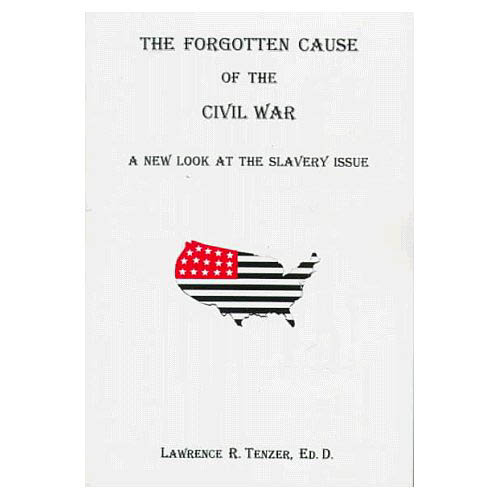
Lawrence R. Tenzer, The Forgotten Civil War (1996)
Within the world of professional historians, certain ideas, topics, and approaches cycle into and out of fashion. It can be hard to find a book by an American historian from the middle of the twentieth century that doesn’t discuss Karl Marx, borrowing or challenging his ideas. He isn’t as stylish today, but others, such as the French philosopher Michel Foucault, have taken his place. Sometimes it’s good to have a passing knowledge of the ideas that were fashionable when your secondary sources were written. This can help you see through the fad to the main idea of the work.
Fads in popular culture can make their way into scholarship. For instance, Michael Pollan wrote The Omnivore’s Dilemma (2006) at a time when lots of people were talking about the dangers of fast food, agriculture’s connection to climate change, and the newly apparent benefits of eating local and organic food. He explains how Americans today have become dependent on industrial farming like no other time in history. The book became a bestseller. Other writers, similarly, have received lots of attention in the past few years by tracing the history of a single food: Dan Koeppel’s Banana, Larry Zuckerman’s The Potato, Jack Turner’s Spice, Sophie Coe’s The True History of Chocolate, Betty Fussell’s The Story of Corn, Mark Kurlansky’s Salt, Cod, and The Big Oyster. People in the future may be less interested in (or vigorously opposed to) looking at history through the lens of one food, but today it is fashionable.
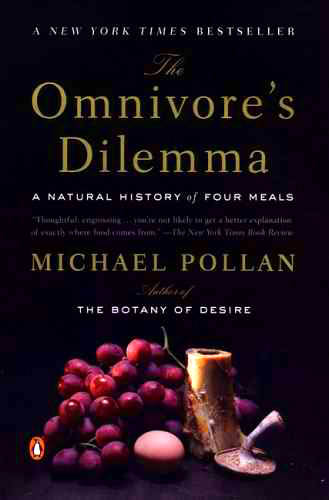
Michael Pollan, The Omnivore’s Dilemma (2006)
Although old books may be products of the politics of their day, they are still worth reading. These monographs can teach you about where the debate has been, how it has changed, and why the contemporary discussion of a topic has deep biases embedded within it. Old materials can serve as evidence of the scientific and cultural shifts that have occurred around your topic. They also open up the opportunity to resurrect past questions and approach them from a modern perspective.
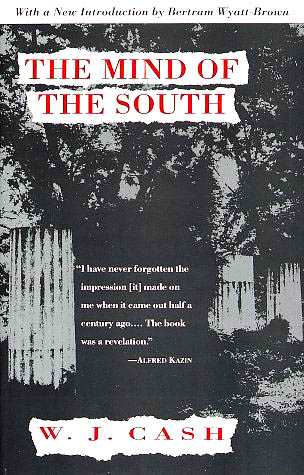
W.J. Cash, The Mind of the South (1941)
A good example of a book that shows its place in history is The Mind of the South by Wilbur Joseph Cash. Published in 1941, the book addresses southern myth-making and how it shaped the culture of the region. Although some of what Cash had to say is still relevant today, much of it would be considered out of date in the twenty-first century. How has our contemporary understanding the culture of the rural South at the turn of the century changed since 1941? Is there a new story to write about Southern reality versus Southern mythology?
Take a look at how Cash writes. Try to imagine this type of description being published in 2008:
He discusses riding along the “new motor roads” (notice these were new at the time) through "brisk towns with tall white buildings in Nebraska Gothic; through the smart suburbs, with their faces newly washed; through industrial and Negro slums, medieval in dirt and squalor and wretchedness, in all but redeeming beauty; past sleepy old hamlets and wide fields and black men signing their sad songs in the cotton, past log cabin and high grave houses, past hill and swamp and plain…”
Cash refrains from giving African Americans much of a voice in his story, evidence of their marginalized position in society when he was writing. While this decision may reflect the era of his work, a new version of the book would certainly place greater emphasis on African Americans’ position in a developing rural economy. The Mind of the South was published in 1941, before the Civil Rights movement, integration, and affirmative action. The election in 2008 of America’s first African-American president would have seemed insurmountable to most in 1940. Considering these advances towards equality, what kinds of question might you ask about Southern culture today that Cash did not think to ask in 1941? What new answers might you give to Cash's original questions?
Return to Top of Page
Thinking about positioning is critical when researching and conceiving of your argument. It's even more important when it comes time to write.
Now that you’ve become familiar with the existing conversations on your topic, put your approach through a simple test.
Are you asking a new question about the past? Are you answering an old question in a new way?
If to either question you can say “yes” then you are well on your way to writing an exciting, original paper.
Be Fair to Those Who Came Before
When trying to make new insights about the past, you invariably will clash with other historians’ interpretations. That is OK. It’s a sign you’re doing something right. But you must work to be as fair to those interpretations as you can be. All history is subjective. Fairness is the closest thing to objectivity we have. When explaining how your perspective differs from others, aspire to summarize their arguments so faithfully that they couldn’t have said it better themselves.
Sending Signals to Your Reader
You want to be able to signal to your reader what conversation you're jumping into and then be clear about how your work forces people to think about your topic in a new way. Listed below are a couple places where you can make that apparent.
Your Introduction
This is where you can briefly sketch the historiography of your topic and then explain what your paper is going to add to it. State your research question, describe how other people have answered it, and then put forward your own answer.
Teachers often force students to begin their thesis statements with although. While you should never feel you have to satisfy a formula in your writing, the reason they do that is because that word signals that you are about to offer a reinterpretation. For example: “Although many think of modern environmentalism beginning with Earth Day in 1970, it is more accurate to date it to 1945 and the dropping of the atomic bombs on Japan.”
Your Footnotes
Because you should be most concerned with constructing a narrative in your paper, you'll want to limit the extent to which you discuss all of the historiography you've uncovered. Instead, make this clear in your footnotes. In addition to offering the reader proof (usually from primary documents) for the claims that you're making, footnotes can give you a chance to locate your work in a body of secondary literature.
For example, the historian Annie Gilbert Coleman published an essay in 2003 on women's skiing in the middle of the 20th century. Although this topic could be considered esoteric and of interest to very few, it is also connected to any number of fields: women's history, gender history, sports history, Western history, environmental history, etc. Let's see how she draws one of these connections with a footnote:
A feminized and sexualized landscape emphasizes the masculinity of the skier, making women skiing down the same mountain potentially subversive.11 ...
11Defining athletic activity as masculine is not new. See Susan K. Cahn, Coming on Strong: Gender and Sexuality in Twentieth Century Women's Sport (Cambridge, Mass: Harvard University Press, 1994), and Donald J. Mrozek, “The 'Amazon' and the American 'Lady': Sexual Fears of Women Athletes,” and Allen Guttman, “Sports and Eros,” in The New American Sport History: Recent Approaches and Perspectives, ed. S. W. Pope (Urbana: University of Illinois Press, 1997), 198-222.
Just like that, Coleman puts her study in conversation with others’ claims about the masculinity of sports.
Your Conclusion
A comment graders write frequently on student papers is “So what?” This statement signals that though the reader may be convinced of your argument, you haven't made it clear why your argument is worth making. You need to show that your paper expands or challenges existing interpretations and assumptions. Your conclusion is your last place to do that. Don't be afraid to be bold in claiming that you have made an important contribution to our understanding of history.
Your Bibliography
Much the same way, your list of sources gives the reader a list of authors whose work you are relying upon in your research. Readers who are knowledgeable about your topic will expect to find in your bibliography a certain list of books with which everyone in the current conversation is familiar. Unexpected books, even those only tangentially related to your topic, can signal to your reader the unique approach that you're going to take with your research.
Craig Colten, An Unnatural Metropolis (2006); William Cronon, Nature’s Metropolis (1991)
Your Title
Even what you call your paper can signal to your reader how you're positioning your argument. When Craig Colten named his history of New Orleans An Unnatural Metropolis (2006), he announced that it would be an urban environmental history in some way conversant with a book that came out in the previous decade, William Cronon's Nature's Metropolis (1991). It's not surprising to find in his introduction a description of Cronon's contribution to the field and how the story of New Orleans will “steer away” from those interpretations.
You won’t always have time to investigate the historiography of your topic. But don’t forget that there is a conversation out there. Imagine the challenges someone could make to your argument. Describe them as you lay out your case. The more convincing and formidable these hypothetical counterarguments are, the more your reader will trust your analysis and the more you will challenge the rigor of your own analysis.
Return to Top of Page
Answer the following questions about each secondary source you rely heavily on:
- What is the author's main argument?
- What are the most important documents the author uses to prove this argument?
- What other types of relevant documents might exist that were not used?
- What alternative arguments could be made using the same documents that the author did?
- What new questions could be asked to build upon the work this author began?
Return to Top of Page
- Do read old and new material on your topic
- Do read material from outside of your discipline
- Do ask your professor and other scholars for suggestions of work related to your own
- Don't see your paper as disconnected from what others have written
- Don't be afraid to challenge others’ interpretations
Return to Top of Page
Cash, W.J. The Mind of the South. New York: Knopf, 1941.
Coe, Sophie D. The True History of Chocolate. New York: Thames & Hudson, 2007.
Coleman, Annie Gilbert. “From Snow Bunnies to Shred Betties: Gender, Consumption,and the Skiing Landscape.” In Seeing Nature through Gender. Edited by Virginia J. Scharff. Lawrence: University Press of Kansas, 2003.
Colton, Craig. An Unnatural Metropolis: Wresting New Orleans from Nature. Baton Rouge: Louisiana State University Press, 2005.
Fussell, Betty. The Story of Corn. Albuquerque: University of New Mexico Press, 2004.
Isenberg, Andrew, ed. The Nature of Cities. Rochester: University of Rochester Press, 2006.
Koeppel, Dan. Banana: The Fate of the Fruit That Changed the World. New York: Hudson Street Press, 2007.
Krech, Shepard III. The Ecological Indian. New York: W. W. Norton, 1999.
Kurlansky, Mark. The Big Oyster: History on the Half Shell. New York: Random House, 2007.
---. Cod: A Biography of the Fish that Changed the World. New York: Penguin Press, 1998.
---. Salt: A World History. New York: Penguin Press, 2003.
Mitman, Gregg. “In Search of Health: Landscape and Disease in American Environmental History.” Environmental History,10 (April 2005). 184-210.
Murphy, Michelle. Sick Building Syndrome and the Problem of Uncertainty. Durham, NC: Duke University Press, 2006.
Pollan, Michael. The Omnivore’s Dilemma. New York: Penguin Press, 2006.
Sellers, Christopher. “Nature and Blackness in Suburban Passage.” In To Love the Wind and the Rain, edited by Dianne D. Glave and Mark Stoll. Pittsburgh: University of Pittsburgh Press, 2006.
Turner, Jack. Spice: A History of Temptation. New York: Vintage, 2005.
Zuckerman, Larry. The Potato: How the Humble Spud Rescued the Western World. New York: North Point Press, 1998.
Return to Top of Page
| 
